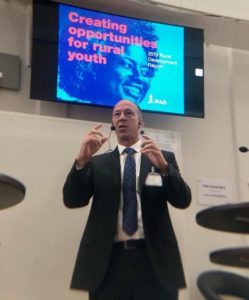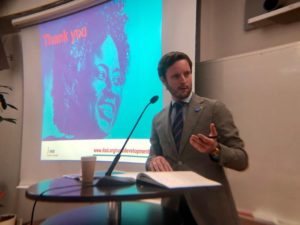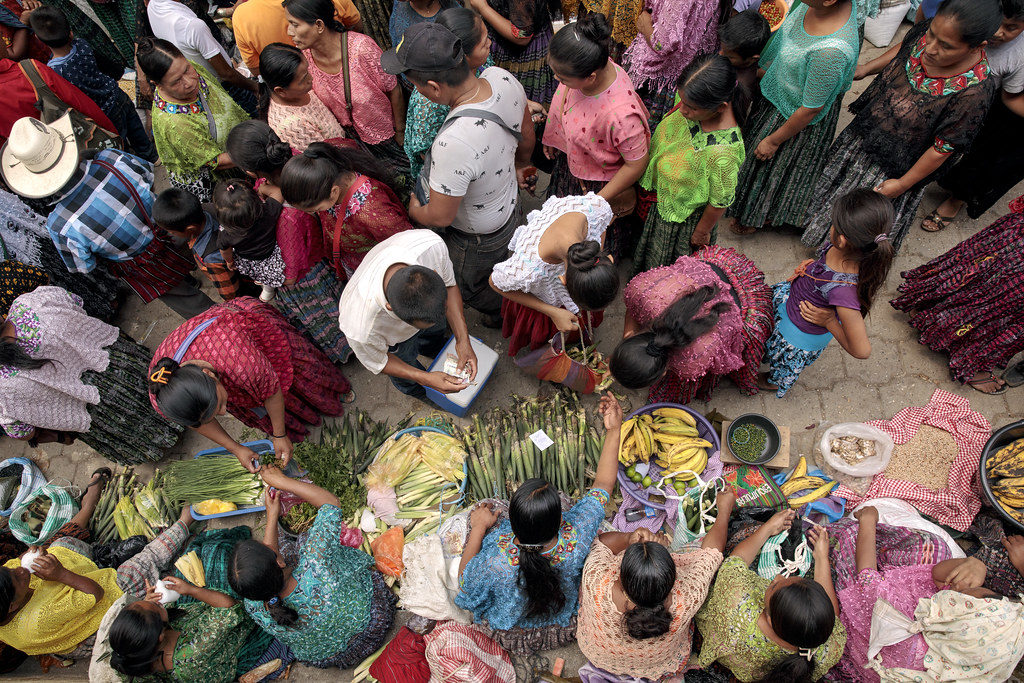The world is undergoing a dramatic demographic shift. There are now 780 million young people in rural areas in low-income countries. These countries tend to have high poverty and fertility rates, and most of them are in southeast Asia and sub-Saharan Africa.
SIANI, IFAD and Sida brought different actors together to discuss how to ensure a successful and sustainable future for rural youth worldwide. IFAD’s Rural Development Report: Creating opportunities for rural youth 2019 provided the basis for the discussion.
Older generations can provide representation for younger members of society. Those with more experience are responsible for moving young people’s voices to the top of the development agenda. However, this responsibility goes beyond providing a platform – mentorship, guidance and promotion are additional steps that should be considered. Giving a voice is only the first step, engagement must continue by providing opportunities for growth and personal development.

Gilbert Houngbo, president of IFAD, spoke about youth and the global mission to achieve the SDGs. He emphasized that agribusiness is a crucial tool in moving towards multiple goals such as food security and nutrition. Building upon this, Paul Winters, also from IFAD, gave a thorough overview of the Rural Development report. Winters explained that the report identifies three foundations of success for rural youth: connectivity, productivity and agency. To strengthen these elements of rural livelihoods, we must consider the context in which rural youth live, both in terms of their family and household environment and presence of opportunity. The dynamic nature of social change plays a role too. This change includes demographic shifts and digitalization.
Jesper Bjarnesen, from the Nordic Africa Institute, provided key insights from academia. Jesper stressed: “Youth is not an age. It is rather a social position.” He explained that people older than the typical youth age may be stuck in a role of dependency from elders in the same way that young people below the age of 25 are. Individuals, who are older than the conventional youth age, face similar challenges and constraints as their younger counterparts. They may be unable to become independent and continue to depend on their families or elders.
Although this group of people have similar obstacles to youth they may be constrained by other factors. Nevertheless, this group of people’s needs must also be addressed and considered when adapting policy to rural needs. Furthermore, Bjarnesen emphasized that youth is when people seek to build new and strong connections, so acknowledging creation of new networks is important, and not necessarily severing ties to family and elders in communities.
Simon Wancke from the The Federation of Swedish Farmers, LRF Ungdomen provided a refreshing perspective from the farmers in northern Europe. Wancke explained that upon reading the report, he was struck by the similarities between young farmers worldwide. He identified with the feeling of neglect highlighted in the report, and underscored that rural youth need to be included in broader policies. The ultimate goal is to make farming profitable and sustainable, and farmers can more effectively achieve these goals if they are mobilized as part of a group with other like-minded people.
The engaging discussion with the speakers touched on a number of crucial topics, such as connection to markets, rural policy and the challenges of being young, rural and female that are specific to women in rural communities.
When asked about linking rural youth to markets, Paul Winters explained that 70% of IFAD’s projects have value chain components: “We have to work more directly with the private sector. There is a big gap between large scale financing and micro scale funding, which IFAD is trying to address.” Without a reliable way to sell their produce, farmers cannot earn from their farming!
Speaking about the triple burden of being young, rural and female, Winters emphasized the need for more cooperation and collaboration between all members of society. “The whole logic of addressing this challenge is shared prosperity. If you convince everyone to work together we will create a bigger pie for everyone. It is harder to cut up a same-sized pie when it is not growing,” he explained. Having a strategy for strengthening the role of rural women in society is the first step, but integrating it into project implantation is a whole other kind of challenge. For an organization that mainly deals with agricultural production gathering money for social projects is not always a clear cut. However, IFAD has started using this approach on a smaller scale in some projects, with the goal to roll it out to more farmers under their umbrella.

Simon Wancke highlighted the main challenge for rural youth of today: “Intergenerational land renewal has to be easier. We need to make sure that people are able to give the farm to the next generation.” This is an interesting dilemma – older generations are unlikely to give up their land because of the time, money and other investments they put into the land. Therefore, young people have a lower chance of inheriting the land. This problem is not isolated to specific pockets in the world – it is global, and therefore requires effective policies that could be replicated and adapted to many regions.
The variety of perspectives from NGOs, public, private sector and academia shed light on the crucial issues young people who live in rural areas face today. The challenges are undeniable, but there are plenty of opportunities too. And the event in itself illustrated that various actors of different ages can come together and discuss the solutions for a youth-centered rural transformation.
